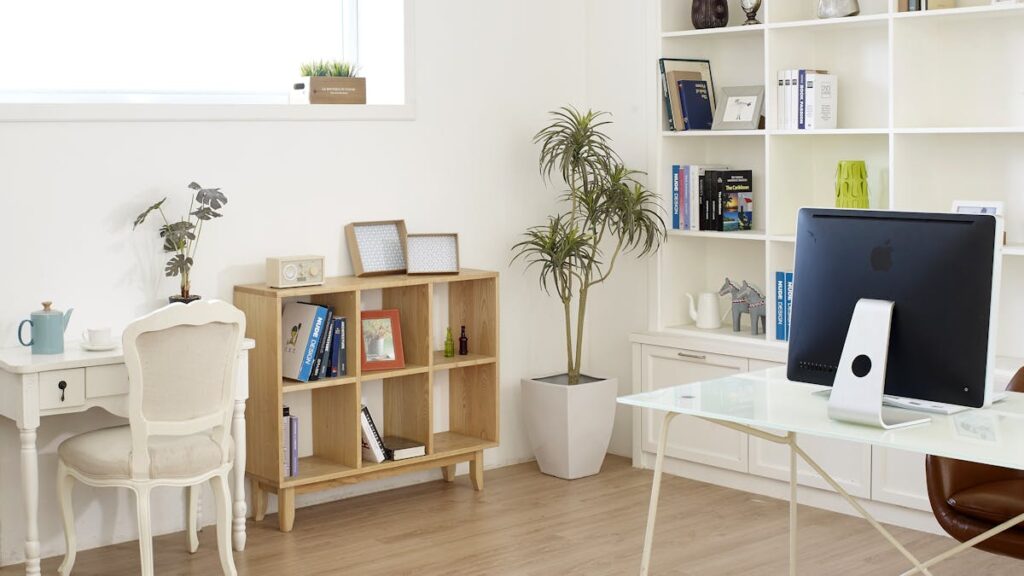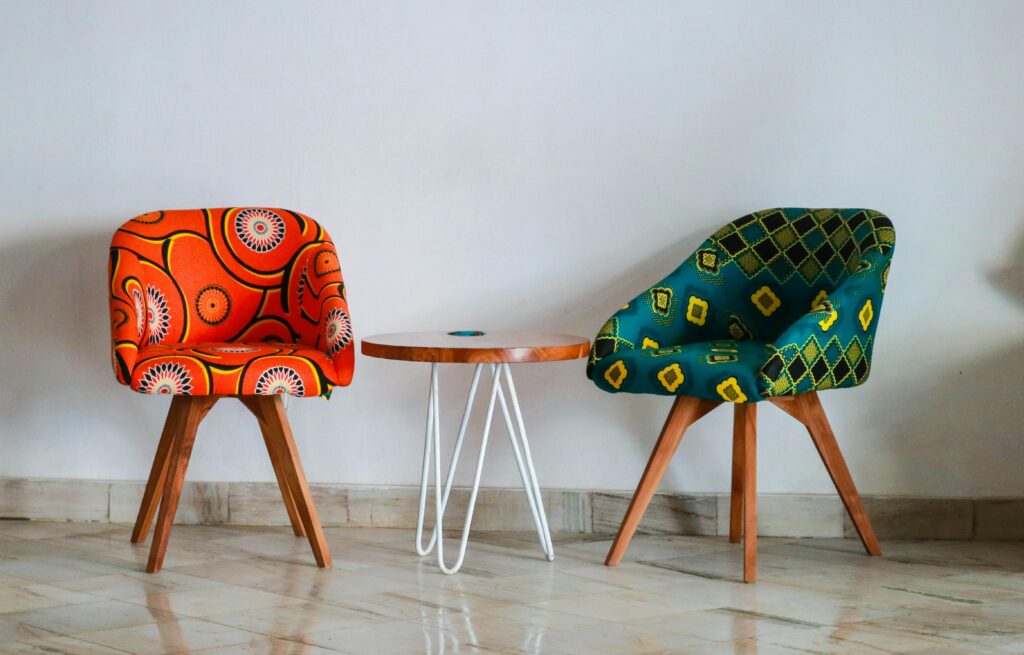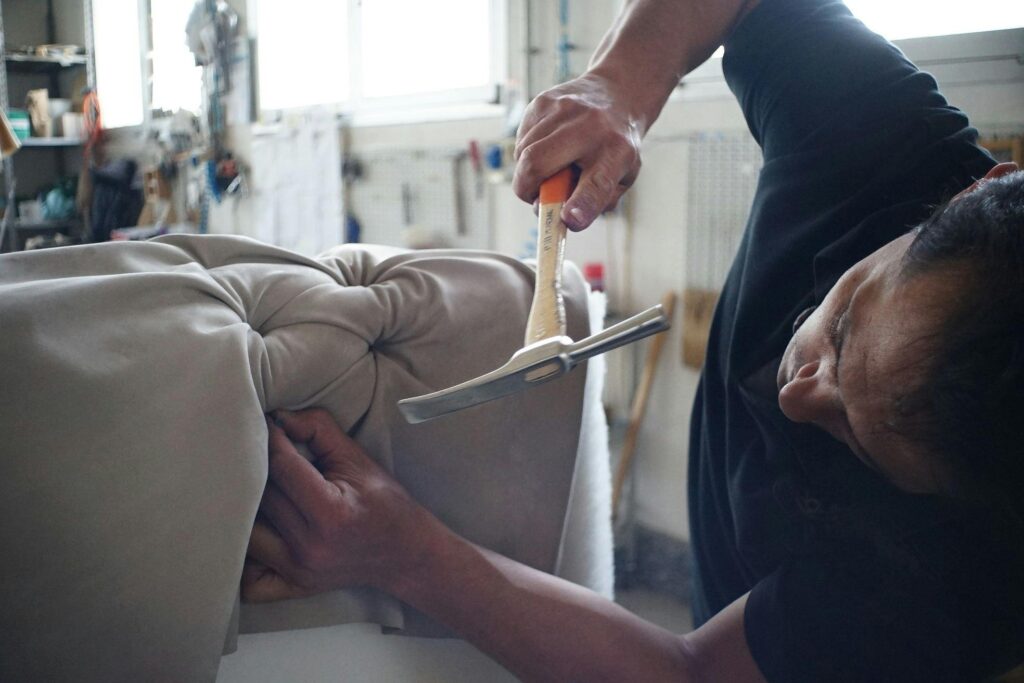Last updated on June 13th, 2025 at 09:43 am
You’re standing in your living room, surrounded by furniture that’s served you well but no longer fits your lifestyle.

Maybe you’re downsizing, redecorating, or simply ready for a change.
Whatever the reason, you’ve decided it’s time to part ways with some of your beloved pieces.
But here’s the kicker – you don’t want to just give them away.
You know there’s value in that well-loved sofa or vintage dining set.
So, what’s your next move?
Welcome to the world of selling used furniture in Canada.
It’s a journey that can be both rewarding and challenging, but with the right knowledge and strategies, you can turn your unwanted items into cold, hard cash.
In this guide, we’ll dive deep into everything you need to know about navigating the Canadian used furniture market.
From prepping your pieces to closing the deal, we’ll cover it all.
So, grab a cup of coffee, get comfortable (maybe in that chair you’re planning to sell), and let’s get started on your furniture-selling adventure.
The Used Furniture Market in Canada: An Overview

Let’s talk about the elephant in the room – or should I say, the sofa in the living room?
The used furniture market in Canada is booming, and for good reason.
- North America, including Canada, is the largest shareholder in the global off-the-shelf second-hand furniture market and is expected to grow at a CAGR of 5.30% during the forecast period.
- Canada is a significant exporter of furniture, with the trade value of furniture exported amounting to approximately six billion U.S. dollars in 2023.
In a world where sustainability is becoming increasingly important, more and more Canadians are turning to second-hand furniture as a way to furnish their homes without breaking the bank or the planet.
But what does this mean for you, the seller?
Well, my friend, it means opportunity.
The current state of the market is ripe for those looking to offload their gently used pieces.
With the rise of online marketplaces and a growing appreciation for vintage and upcycled items, there’s never been a better time to sell your used furniture in Canada.
Now, you might be wondering,
“Why would anyone want to buy my old stuff?”
Great question!
Here are a few reasons:
- Cost savings: New furniture can be expensive. Many buyers are looking for quality pieces at a fraction of the retail price.
- Unique finds: Some people love the thrill of discovering one-of-a-kind items that tell a story.
- Immediate availability: Unlike new furniture that often comes with long delivery times, used pieces are typically ready for pickup right away.
- Environmental consciousness: Buying used reduces waste and supports a circular economy.
Of course, selling used furniture isn’t without its challenges.
You’ll need to work out pricing, deal with potential buyers, and handle logistics.
But don’t worry – we’ll cover all of that and more in the coming sections.
The key takeaway here?
There’s a market for your used furniture, and with the right approach, you can tap into it successfully.
Preparing Your Furniture for Sale

Alright, you’ve decided to take the plunge and sell your used furniture.
But here’s the cold, hard truth: presentation is everything.
You wouldn’t show up to a job interview in your pajamas, would you?
The same principle applies to your furniture.
Let’s break down how to get your pieces ready for their big debut.
Cleaning and Repair Tips
First things first – it’s time to roll up your sleeves and give your furniture some TLC.
Here’s a quick checklist to get you started:
- Dust and vacuum thoroughly: Get into every nook and cranny.
- Clean upholstery: Use appropriate cleaners for fabric, leather, or other materials.
- Polish wood surfaces: A little shine goes a long way.
- Tighten loose screws or bolts: Wobbly furniture is a big turn-off for buyers.
- Fix minor damages: A small investment in repairs can significantly increase your selling price.
Remember, you’re not aiming for brand new – you’re aiming for the best possible version of used.
Staging and Photography Advice
Now that your furniture is looking its best, it’s time to capture its good side.
Great photos can make or break your sale.
Here are some tips to make your furniture look like it belongs in a magazine spread:
- Choose the right background: A clean, uncluttered space is ideal.
- Use natural light: It’s the most flattering and shows true colors.
- Take multiple angles: Buyers want to see every side of the piece.
- Include close-ups: Show off unique details or any imperfections honestly.
- Stage it: Place a vase of flowers on that side table to help buyers envision it in their home.
Pro tip: Consider using a photography app like VSCO or Snapseed to enhance your photos without going overboard.
Pricing Strategies
Now comes the million-dollar question (or maybe the hundred-dollar question): how much should you charge?
Pricing used furniture is part science, part art.
Here’s how to strike the right balance:
- Research similar items: Check online marketplaces to see what comparable pieces are selling for.
- Consider the item’s condition: Be honest about wear and tear.
- Factor in the brand: High-end brands can command higher prices, even when used.
- Think about demand: Trendy or timeless pieces might fetch more than very specific styles.
- Leave room for negotiation: Price slightly higher than your bottom line, but be realistic.
Remember, the goal is to price your item attractively while still making it worth your while.
Too high, and you’ll scare off buyers.
Too low, and you’re leaving money on the table.
If you follow these preparation steps, you’re setting yourself up for success in the Canadian used furniture market.
Your pieces will look their best, shine in photos, and be priced to sell.
Now, let’s move on to where you’ll actually list these beauties for sale.
Choosing the Right Selling Platform

You’ve got your furniture cleaned, photographed, and priced.
Now what?
It’s time to get it in front of potential buyers.
But here’s the thing – not all selling platforms are created equal.
Choosing the right one can mean the difference between a quick sale and your furniture gathering dust in the corner.
Let’s break down your options:
#1). Online Marketplaces
These are the heavy hitters in the world of used furniture sales.
Platforms like Kijiji, Facebook Marketplace, and Craigslist are where many Canadians start their search for second-hand treasures.
Pros:
- Large user base
- Easy to list items
- Often free to use
Cons:
- Can be competitive
- Potential for no-shows or lowball offers
Top tools:
#2). Local Classifieds
Don’t underestimate the power of local newspapers and community boards.
Some buyers, especially older generations, still prefer these traditional methods.
Pros:
- Reach local buyers who might not use online platforms
- Less competition than online marketplaces
Cons:
- Limited reach
- May require paid ads
Top tools:
- Local newspaper classifieds
- Community bulletin boards
#3). Consignment Shops
If you have high-end or antique pieces, consignment shops might be your best bet.
They do the selling for you – for a fee.
Pros:
- Professional selling experience
- Access to a curated customer base
Cons:
- They take a percentage of the sale
- You might have to wait longer for a sale
Top tools:
- Local antique shops
- Furniture consignment stores
#4). Social Media Platforms
Don’t forget about the power of your own network.
Platforms like Instagram and Pinterest can be great for reaching potential buyers.
Pros:
- Built-in audience of friends and followers
- Easy to share and reshare listings
Cons:
- Limited to your network unless you use paid promotions
- Might not reach serious buyers
Top tools:
- X
- LinkedIn (for office furniture)
So, which platform should you choose?
Here’s the secret: don’t put all your eggs in one basket.
List on multiple platforms to maximize your reach.
But remember, each platform has its own culture and expectations.
What works on Kijiji might not fly on Facebook Marketplace.
Do your research, tailor your approach, and be prepared to adjust your strategy as you go.
The right platform (or combination of platforms) will help you connect with the perfect buyer for your used furniture.
Now that you know where to sell, let’s talk about how to make your listings stand out from the crowd.
Read also: Selling Furniture in Canada: 7 Best Platforms + Strategies for Instant Sales
Marketing Your Used Furniture Effectively

Listen up, because this is where the rubber meets the road.
You can have the most beautiful piece of furniture in the world, but if you can’t market it effectively, it’s not going anywhere.
Marketing is the secret sauce that turns lookers into buyers.
Let’s dive into how you can become a marketing maestro for your used furniture.
a). Writing Compelling Descriptions
Your description is your sales pitch.
It needs to be clear, honest, and persuasive.
Here’s how to craft a description that sells:
- Start with a bang: Use an attention-grabbing headline.
- Be specific: Include dimensions, materials, and brand names.
- Highlight unique features: What makes this piece special?
- Address potential concerns: Mention any flaws upfront to build trust.
- Use sensory language: Help buyers imagine the piece in their home.
Example:
“Elevate your living room with this luxurious leather sofa. Crafted by [Brand Name], this 3-seater combines timeless elegance with modern comfort. Buttery soft leather, sturdy oak frame, and plush cushions make this the perfect spot for movie nights or entertaining guests. Minor wear on armrests adds character to this well-loved piece. Dimensions: 84″W x 36″D x 32″H. Make your space magazine-worthy today!”
b). Leveraging Social Proof
People trust other people.
Use this psychological principle to your advantage.
Here are some ways to incorporate social proof:
- Mention positive comments: “Everyone who’s seen this dining set has raved about its craftsmanship.”
- Share its history: “This antique dresser has been a cherished part of our family for three generations.”
- Include testimonials: If you’ve sold furniture before, use positive feedback from previous buyers.
c). Timing Your Listings
Timing can make or break your sale.
Here’s when to list for maximum impact:
- Thursdays and Fridays: People start thinking about weekend projects.
- Beginning of the month: When many people move to new homes.
- Seasonal considerations: Patio furniture sells best in spring, while indoor pieces peak in fall.
Pro tip: Refresh your listings regularly to keep them at the top of search results.
Remember, effective marketing is about telling a story.
Your furniture has a history, a personality, and a future in someone else’s home.
Your job is to help potential buyers see that vision.
By crafting compelling descriptions, leveraging social proof, and timing your listings strategically, you’re not just selling furniture – you’re selling a lifestyle upgrade.
Now that you’ve got your marketing game on point, let’s talk about closing the deal.
Practical Tips for a Successful Sale

Alright, you’ve done the prep work, chosen your platforms, and marketed like a pro.
Now it’s time for the main event: actually selling your furniture.
This is where the rubber meets the road, folks.
Let’s dive into some practical tips to help you seal the deal and turn your used furniture into cold, hard cash.
1. Negotiation Strategies
Negotiation is an art, and in the world of used furniture sales, it’s a crucial skill.
Here’s how to navigate this delicate dance:
- Start high, but be realistic: Price your item slightly above what you’re willing to accept.
- Know your bottom line: Decide on the lowest price you’ll accept before you start negotiating.
- Use the “sandwich” technique: Acknowledge the offer, explain why your price is fair, then restate your price.
- Be willing to walk away: Sometimes, the best negotiation tactic is being prepared to say no.
Example conversation:
Buyer: “Would you take $150 for the dining table?”
You: “I appreciate your offer, but given the table’s excellent condition and solid wood construction, I can’t go that low. The current price of $250 is already a great deal for a piece of this quality. How about we meet in the middle at $200?”
2. Safety Considerations
In your excitement to make a sale, don’t forget about safety.
Here are some tips to keep you protected:
- Meet in public places for smaller items.
- If buyers must come to your home, have someone else present.
- Trust your instincts: If something feels off, it probably is.
- Be cautious with personal information: Use a separate email for transactions if possible.
3. Handling Payments and Logistics
The devil’s in the details, as they say.
Here’s how to handle the nitty-gritty of closing the sale:
Payment methods:
- Cash is king for in-person sales.
- For larger items, consider accepting e-transfers.
- Be wary of checks or money orders – they can be fraudulent.
Delivery options:
- Buyer pickup (preferred for most items)
- Local delivery (if you have the means)
- Shipping (for smaller items only)
Pro tip: If you’re offering delivery, factor the cost into your price or charge separately.
Remember, the sale isn’t over until the furniture is out of your possession and the money is in your hand.
Be clear about your policies upfront to avoid misunderstandings.
For example, you might say: “Payment in full is required before the item leaves my possession. I accept cash or e-transfer only. All sales are final.”
By following these practical tips, you’ll be well-equipped to handle the actual transaction process.
But what about when things don’t go as smoothly as planned?
Let’s tackle some common challenges in the next section.
Overcoming Common Challenges

Let’s face it – selling used furniture in Canada isn’t always a walk in the park.
You’re going to hit some bumps along the way.
But here’s the good news: with the right strategies, you can overcome these challenges and come out on top.
Let’s dive into some common hurdles and how to clear them like a pro.
1. Dealing with Low-Ball Offers
We’ve all been there.
You’ve priced your beautiful oak dresser at a fair $300, and someone comes in with a $50 offer.
It’s enough to make you want to flip a table (preferably not the one you’re selling).
Here’s how to handle it:
- Don’t take it personally: It’s just business.
- Respond politely but firmly: “Thanks for your interest, but that’s well below my asking price.”
- Counter with your lowest acceptable offer: “The lowest I can go is $275.”
- Highlight the value: “This dresser is solid oak and in excellent condition. It’s a steal at $300.”
Remember, some people will always try to get a bargain.
It’s up to you to stand your ground and know your furniture’s worth.
2. Managing No-Shows
You’ve cleared your schedule, moved the furniture to an accessible spot, and… crickets.
The buyer’s a no-show.
Here’s how to minimize this frustration:
- Confirm the appointment: Send a reminder message the day before.
- Get a phone number: It’s easier to reach people directly.
- Have a backup plan: Schedule another interested buyer as a backup.
- Set a time limit: “I’ll wait for 15 minutes past our agreed time.”
Pro tip: If someone’s a no-show, don’t be afraid to leave an honest review on the platform you’re using.
It helps other sellers and might discourage future flaky behavior.
3. Handling Difficult Buyers
Sometimes, you’ll encounter buyers who are… let’s say, challenging.
Here’s how to handle different types of difficult buyers:
The Nitpicker:
- Listen to their concerns
- Offer solutions if reasonable
- Be prepared to walk away if they’re unreasonable
The Indecisive Buyer:
- Set a deadline: “I have other interested buyers, so I need a decision by tomorrow”
- Offer a short-term hold for a small deposit
The Haggler:
- Stand firm on your price
- Offer to throw in small extras instead of lowering the price
- Be willing to let them walk away
Remember, you’re in control of the sale.
Don’t let difficult buyers pressure you into a deal you’re not comfortable with.
It’s better to wait for the right buyer than to regret a hasty sale.
4. When Things Go Wrong
Despite your best efforts, sometimes things just don’t work out.
Maybe the buyer discovers a flaw you missed, or the item gets damaged during pickup.
Here’s how to handle these situations:
- Stay calm and professional
- Listen to the buyer’s concerns
- Offer solutions: repair, partial refund, or full refund if necessary
- Learn from the experience for future sales
Pro tip: Consider creating a simple sales agreement for higher-priced items.
It can protect both you and the buyer in case of disputes.
If you anticipate these challenges and have strategies in place to deal with them, you’ll be well-prepared for whatever the used furniture market throws your way.
Remember, every challenge is an opportunity to learn and improve your selling skills.
Stay positive, stay professional, and keep your eye on the prize – turning your used furniture into cash and clearing out some space in your home.
Now, let’s wrap things up and recap what we’ve learned about selling used furniture in Canada.
Final Thoughts
Well, we’ve come to the end of our guide of selling used furniture in Canada.
Let’s take a moment to recap what we’ve learned:
- The Canadian used furniture market is thriving, offering plenty of opportunities for sellers.
- Preparation is key – clean, repair, and stage your furniture for maximum appeal.
- Choose the right selling platforms to reach your target buyers.
- Craft compelling listings with great photos and descriptions.
- Master the art of negotiation and handle transactions safely.
- Be prepared to overcome common challenges like low-ball offers and no-shows.
But here’s the most important takeaway: selling used furniture is more than just a transaction.
It’s about giving your beloved pieces a new home, reducing waste, and yes, making some money in the process.
So, what are you waiting for?
That dusty dresser in the corner isn’t going to sell itself.
Take what you’ve learned here and put it into action.
Start small if you’re feeling overwhelmed – maybe list just one item to get your feet wet.
Remember, every expert was once a beginner.
With each sale, you’ll gain confidence and refine your techniques.
Before you know it, you’ll be a used furniture selling pro, turning your unwanted items into cold, hard cash.
So go ahead, take that first step.
Your furniture (and your wallet) will thank you.
FAQ Section
Q: How long does it typically take to sell used furniture in Canada?
A: The time it takes to sell used furniture can vary widely depending on factors like the item’s condition, price, and demand. Some pieces might sell within hours, while others could take weeks or even months. On average, well-priced, popular items tend to sell within 1-2 weeks.
Q: Is it better to sell furniture individually or as a set?
A: It depends on the type of furniture and your target market. Matching sets (like dining tables with chairs) often sell well together. However, selling pieces individually can sometimes yield a higher total price and may be easier to move. Consider listing both ways to see what gets more interest.
Q: Should I accept returns on used furniture?
A: Generally, it’s best to sell used furniture “as is” without accepting returns. However, be honest about the condition to avoid disputes. For higher-priced items, you might consider a short inspection period (e.g., 24 hours) for the buyer to check for any undisclosed damages.
Q: How can I ship large furniture items to buyers in other cities?
A: While local pickup is ideal, you can use shipping services for long-distance sales. Consider freight shipping companies or specialized furniture shipping services. Remember to factor shipping costs into your price or charge the buyer separately.
Q: What’s the best way to handle payment for expensive furniture items?
A: For high-value items, cash or e-transfer are generally the safest options. If using an online platform with buyer protection (like eBay), follow their recommended payment methods. For very expensive items, consider using an escrow service for added security.
Q: How do I price antique or vintage furniture?
A: Research similar items online and in local antique shops. Consider factors like age, condition, rarity, and current trends. For valuable pieces, it might be worth getting an appraisal from an antique dealer or using online valuation services.
Q: Is it worth refurbishing furniture before selling?
A: Minor repairs and cleaning are usually worth the effort. Major refurbishments depend on the item’s potential value. If a simple refinish or reupholster job could significantly increase the sale price, it might be worth the investment. However, some buyers prefer to refurbish items themselves, so consider your target market.
Read also:
 cPanel Web HostingAffordable Canadian cPanel hosting, user-friendly and reliable.
cPanel Web HostingAffordable Canadian cPanel hosting, user-friendly and reliable. Reseller HostingStart your own hosting business with flexible reseller hosting plans.
Reseller HostingStart your own hosting business with flexible reseller hosting plans. Affiliate ProgramJoin our affiliate program and earn commissions by referring customers.
Affiliate ProgramJoin our affiliate program and earn commissions by referring customers. DomainsFind the perfect domain for your business or personal site with ease.
DomainsFind the perfect domain for your business or personal site with ease. Domain TransferTransfer your domain to us and keep your website running without interruption.
Domain TransferTransfer your domain to us and keep your website running without interruption. WHOIS LookupQuickly find who owns a domain with our easy WHOIS search tool.
WHOIS LookupQuickly find who owns a domain with our easy WHOIS search tool. VPS HostingReliable VPS hosting crafted for performance and peace of mind.
VPS HostingReliable VPS hosting crafted for performance and peace of mind.
